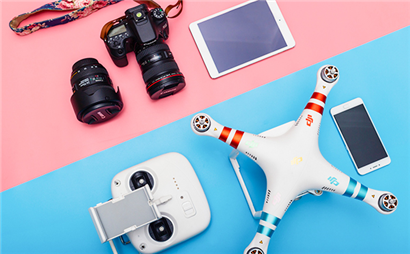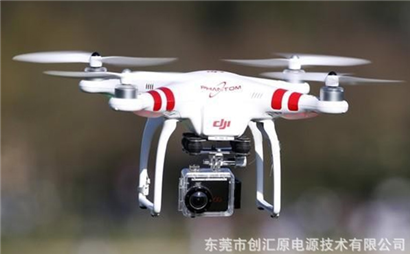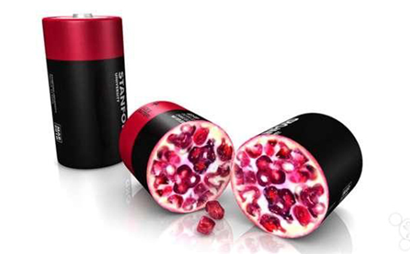Customer Service:
+86 0769 8269 8200
In mobile phones, batteries play a very important role both in terms of technology and price. Today, the batteries used in mobile phones on the market have basically completed the transition from nickel batteries to lithium batteries. Perhaps because the mobile phone battery has just completed a revolution from nickel battery to lithium battery, people's understanding of lithium battery is not uniform, and incorrect statements and practices are quite popular in many cases. Therefore, it is necessary to know a little about lithium batteries and master the correct use of lithium batteries.
Type of lithium battery
At present, the secondary batteries used in the market mainly include nickel metal hydride (Ni MH) and lithium ion (Li ion). Among the lithium-ion batteries, liquid lithium-ion batteries (LiB) and polymer lithium-ion batteries (LiP) have been mass produced. Therefore, in many cases, the battery marked with Li ion must be a lithium ion battery. But it is not necessarily a liquid lithium ion battery, but also a polymer lithium ion battery.
Lithium ion battery is an improved product of lithium battery. Lithium batteries have existed for a long time, but lithium is highly active (remember its position in the periodic table?) It is not very safe when used. It often burns and bursts during charging. Later, there was an improved lithium ion battery, which added ingredients that can inhibit the activity of lithium elements (such as cobalt, manganese, etc.), so that lithium batteries can truly achieve safety, efficiency and convenience, and the old lithium batteries are basically eliminated. As for how to distinguish them, we can identify them from the battery logo, Li battery is Li, Li ion battery is Li ion. Now, the so-called "lithium batteries" used in laptops and mobile phones are actually lithium ion batteries.
The basic structure of modern batteries includes three elements: positive pole, negative pole and electrolyte. As a kind of battery, lithium ion battery also has these three elements. Generally, lithium ion technology uses liquid or inorganic colloidal electrolyte, so a solid shell is required to contain combustible active ingredients, which increases the weight and cost of the battery and limits the flexibility of size and shape. In general, the minimum thickness of the liquid lithium ion secondary battery is 6mm, which is difficult to reduce.
The so-called polymer lithium ion battery is that at least one or more of the three main structures use polymer materials as its main battery system. The new generation of polymer lithium-ion battery has a high degree of polymerization, so it can be thinned (the thinnest is 0.5mm), any area and any shape in shape, which greatly improves the flexibility of battery shape design, so that it can be made into batteries of any shape and capacity according to product requirements. At the same time, the unit energy of polymer lithium-ion battery is 50% higher than that of current general lithium-ion battery, and its capacity, charging and discharging characteristics, safety, operating temperature range, cycle life and environmental protection performance are greatly improved compared with lithium ion battery.
At present, the liquid lithium ion (LiB) battery sold on the market is easy to cause the safety valve to break when overcharged, which is very dangerous. Therefore, it is necessary to install protective IC lines to ensure that the battery will not be overcharged. In terms of polymer lithium ion battery, this type of battery has better charge discharge resistance than liquid lithium ion battery, so the requirements for external protection of IC circuit can be appropriately relaxed. In addition, in terms of charging, the polymer lithium ion battery can be charged by using the IC constant current, which can shorten the waiting time compared with the time required by the CCCV (Constant Current Constant Voltage) charging method used for lithium ion secondary batteries.
Application of lithium battery by mobile phone manufacturers
Although almost all manufacturers have preferred to use lithium ion batteries in recent years, the major mobile phone manufacturers in the world still have their own characteristics and habits in battery selection, for example, in the same historical period:
Nokia: Ni-MH (nickel metal hydride) battery, LiB (liquid lithium ion) battery, not LiP (polymer lithium ion) battery.
Ericsson: Ni-MH battery, LiB battery and LiP battery are used.
Motorola: Ni-MH battery, LiB battery, not LiP battery.
It is not difficult to find that Ericsson has demonstrated its own nature as a pioneer in mobile phone technology from the earliest selection of LiP polymer lithium ion batteries for mobile phones. According to the information I have found, at present, the main manufacturers of polymer lithium ion batteries are Japanese Sony, Panasonic, GS and other companies. In 2000, the production volume reached 21 million, of which 50% are Ericsson mobile phones. Today in 2002, lithium ion batteries have been widely used and popularized in mobile phones of other mobile phone manufacturers. However, the use of polymer lithium-ion batteries is far from being popular among all mobile phone manufacturers, and it will take time for them to be widely used.
On the other hand, although lithium ion batteries have many advantages, they also have defects, such as high price and less charging and discharging times. The charging and discharging times of lithium battery are only 400-600 times, and the specially improved products are only 800 times. The NiMH battery can be charged more than 700 times, and some high-quality products can be charged and discharged up to 1200 times. In this comparison, the NiMH battery is longer than the lithium battery. In addition, the price of nickel metal hydride battery is much lower than that of lithium battery. Strictly speaking, lithium battery also has memory effect, but its memory effect is very low and can be basically ignored.
So far, there is no perfect battery.
Use of lithium ion battery
This part is the focus of this article, and we will talk about it in three points.
1. How to charge a new battery
When using lithium battery, it should be noted that the battery will enter the sleep state after being placed for a period of time. At this time, the capacity is lower than the normal value, and the service time will also be shortened. However, the lithium battery is easy to activate. After 3-5 normal charging and discharging cycles, the battery can be activated to recover its normal capacity. Due to the characteristics of lithium battery itself, it has almost no memory effect. Therefore, the new lithium battery in the user's mobile phone does not require special methods and devices during the activation process. Not only in theory, but also in my own practice, it is the best to use the standard method of charging from the beginning, which is a "natural activation" method.
As for the "activation" of lithium batteries, many people have said that the charging time must exceed 12 hours, and it must be repeated three times to activate the batteries. The statement that "the first three charges will take more than 12 hours" is obviously a continuation of the statement from nickel batteries (such as nickel cadmium and nickel hydrogen). So this statement can be said to be misinformation at the beginning. The charging and discharging characteristics of lithium batteries and nickel batteries are very different, and we can tell you very clearly that all the serious formal technical data I have reviewed emphasize that overcharge and overdischarge will cause great harm to lithium batteries, especially liquid lithium ion batteries. Therefore, it is better to charge according to the standard time and method, especially not to charge for more than 12 hours. Generally, the charging method described in the mobile phone manual is the standard charging method suitable for the mobile phone.
In addition, the mobile phone or charger with lithium battery will automatically stop charging after the battery is fully charged. There is no so-called "trickle" charging of nickel charger that lasts for more than 10 hours. That is to say, if your lithium battery is fully charged, it will also be charged in vain when it is placed on the charger. And none of us can guarantee that the characteristics of the battery charging and discharging protection circuit will never change and the quality will be foolproof, so your battery will be at the edge of danger for a long time. This is another reason why we oppose long charging.
In addition, for some mobile phones, if the charger is not removed after charging for a certain time, the system will not only not stop charging, but also start the discharge charging cycle. Perhaps the manufacturer of this practice has its own purpose, but it is obviously detrimental to the life of the battery and mobile phone/charger. At the same time, long charging takes a long time, often at night. In the case of China's power grid, the voltage at night in many places is relatively high and fluctuates greatly. As has been said before, lithium batteries are very delicate. They are much less resistant to fluctuations in charge and discharge than nickel batteries, which brings additional risks.
In addition, another aspect that cannot be ignored is that lithium batteries are also not suitable for overdischarge, which is also very unfavorable to lithium batteries. This leads to the following questions.
2. When to start charging in normal use
We can often see this statement, because the number of charges and discharges is limited, so the mobile phone battery should be used up as much as possible to recharge. But I found an experimental table about the charging and discharging cycle of lithium ion battery. The data about the cycle life are listed as follows:
Cycle life (10% DOD):>1000 times
Cycle life (100% DOD):>200 times
DOD is the abbreviation of discharge depth. It can be seen from the table that the number of rechargeable times is related to the discharge depth, and the cycle life at 10% DOD is much longer than that at 100% DOD. Of course, if the relative total capacity of actual charging is 10% * 1000=100,100% * 200=200, the full charging and discharging of the latter is better, but the previous netizen's statement needs to be corrected: under normal circumstances, you should charge the battery according to the principle of recharging after the remaining battery power is used up, but if your battery is not expected to last for the whole day on the second day, you should start charging in time, Of course, if you are willing to carry the charger to the office, it is another matter.
When you need to charge in order to deal with the important event that is expected to lead to busy communication, even when the battery has a lot of residual power, you should only charge in advance, because you have not really lost "1" charging cycle life, that is, "0. x" times, and often this x is very small.
The principle of recharging the remaining battery power is not to make you go to extremes. As a popular saying like long charging, it is "try to use up the battery power of the mobile phone, and it is better to use automatic shutdown". In fact, this practice is only on nickel batteries, in order to avoid memory effects. Unfortunately, it has also spread in lithium batteries. There was an example where someone used to automatically shut down the phone after the warning that the battery level of the phone was too low, but they still did not charge. As a result, the mobile phone in this example did not respond during the subsequent charging and startup, and had to be sent to the customer service for maintenance. In fact, this is because the voltage of the battery is too low due to excessive discharge, so that the battery does not have normal charging and starting conditions.
3. The correct approach to lithium battery mobile phones
To sum up, my most important tips for charging and discharging lithium battery mobile phones in use are:
① Charge according to the standard time and procedure, even the first three times;
② When the cell phone battery is too low, you should start charging as soon as possible;
③ The activation of the lithium battery does not require a special method. The lithium battery will naturally activate during normal use of the mobile phone. If you insist on using the popular "first three 12 hour long charging activation" method, it will not actually work.
Therefore, it is wrong to pursue the super long 12 hour charging and use the lithium battery cell phone to automatically shut down. If you used to do things according to wrong statements, please correct them in time. It may not be too late.
Of course, in the case of good quality of self protection and control circuits of mobile phones and chargers, the protection of lithium batteries is still quite guaranteed. Therefore, the understanding of charging rules is the key point, and some concessions can be made under certain circumstances. For example, if you find that your mobile phone must be charged before you go to bed at night, you can also start charging before going to bed. The key is that you should know what is the right way to do it, and do not deliberately follow the wrong statement.

Usage and life extension of lithium battery for UAV

Tightness of preventing electric vehicle battery from bulging in summer

Six maintenance rules for lithium battery of UAV

Battery Breakthrough: Scientists have built 10 times the capacity of lithium silicon battery

CHY Power Technology supply with one-stop smart energy storage solution,We strive to provide reliable, sustainable and versatile one-stop outdoor and household backup power solutions for millions of homes and communities around the world.

Customer Service:
+86 0769 8269 8200
Add: No. 2 Qinghe Road, Huangjingkeng Village, Huangjiang Town, Dongguan City, Guangdong Province, China
E-mail: peter@aisun-power.com
Copyright © 2022 Dongguan CHY Power Technology Co., Ltd All rights reserved YueICP NO.17160197